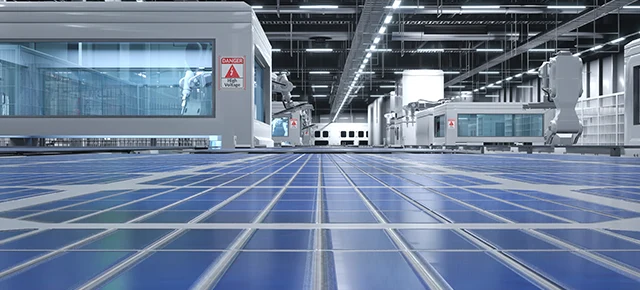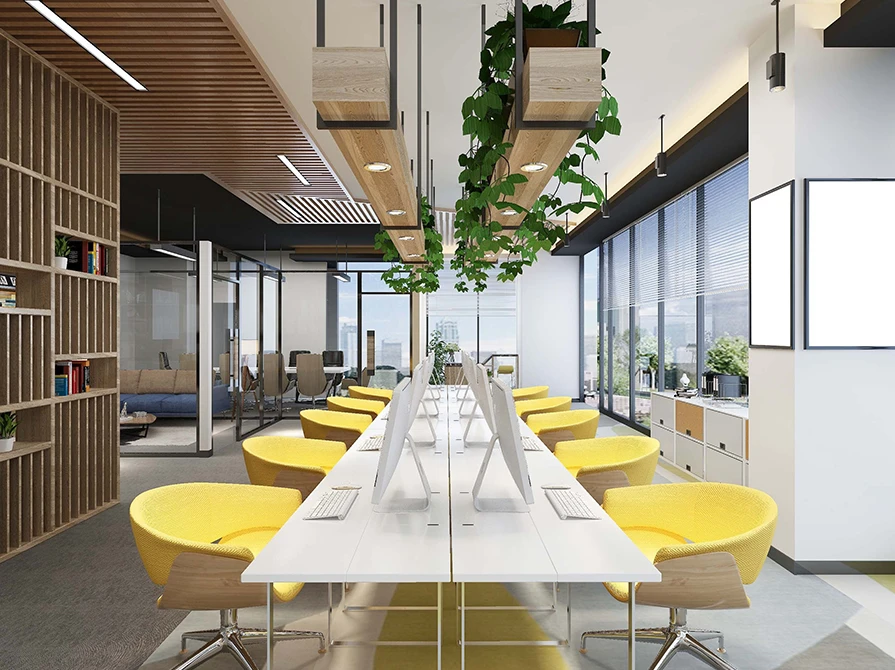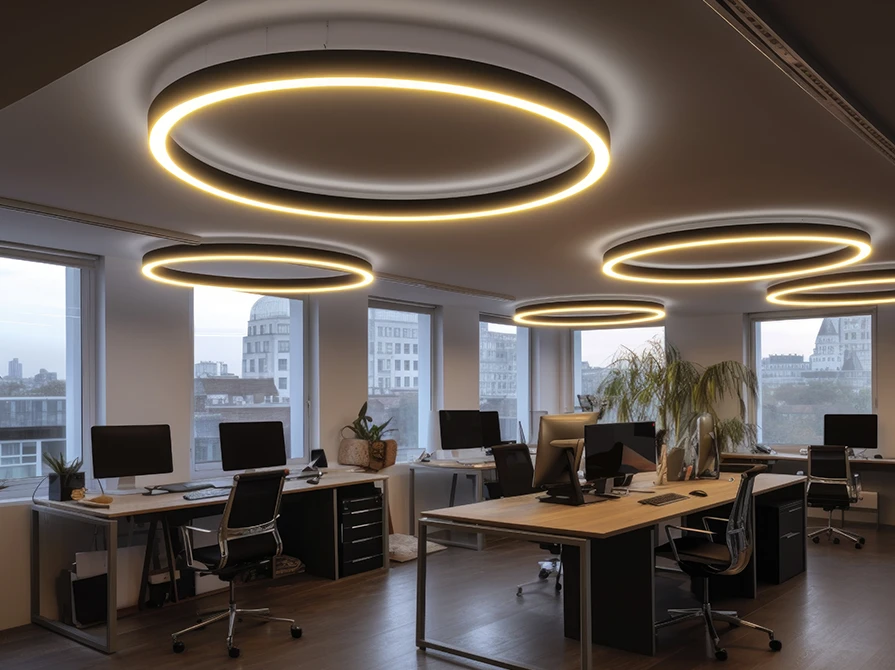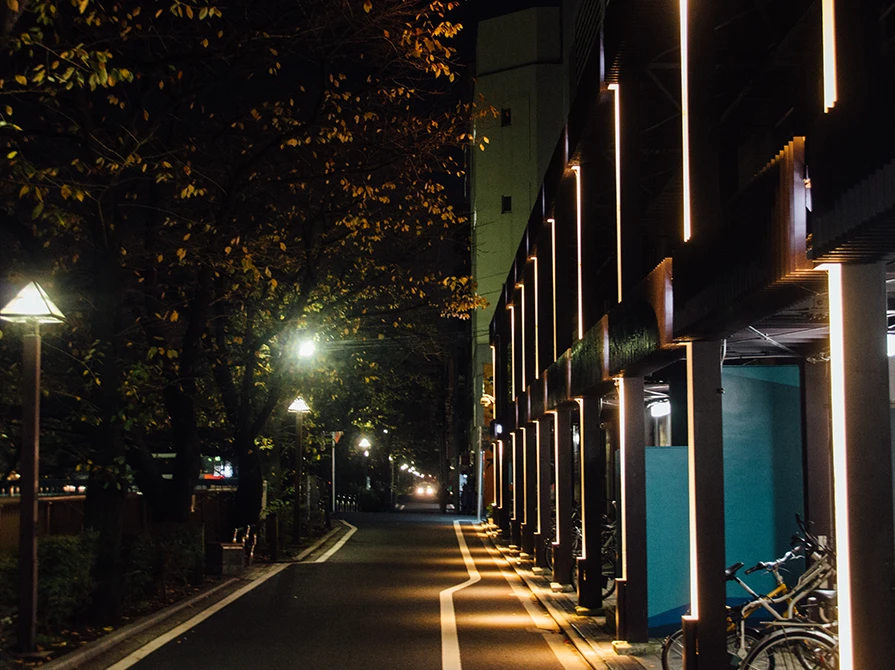Illuminating Efficiency: Optimizing Lighting in Solar Cell Manufacturing Units
In the dynamic landscape of renewable energy, solar cell manufacturing plays a pivotal role in harnessing the power of the sun to generate clean electricity. In this blog, we delve into the importance of lighting optimization in solar cell manufacturing units and explore strategies to enhance efficiency, productivity, and quality in the production process.
Importance of Lighting in Solar Cell Manufacturing:
Lighting plays a critical role in solar cell manufacturing units, impacting various aspects of the production process, including:
- Quality Control: Adequate lighting is essential for visual inspection and quality control measures to ensure the integrity and performance of solar cells.
- Worker Safety: Proper illumination enhances visibility and reduces the risk of accidents and injuries, promoting a safe working environment for personnel.
- Productivity: Well-lit workspaces contribute to employee comfort, concentration, and productivity, leading to improved efficiency in manufacturing operations.
- Energy Efficiency: Optimized lighting solutions can reduce energy consumption and operational costs, aligning with sustainability goals in solar cell production.
LED Lighting Solutions for Solar Cell Manufacturing:
LED lighting technology offers numerous advantages for solar cell manufacturing units, including:
- Energy Efficiency: LED fixtures consume less energy than traditional lighting sources, resulting in cost savings and reduced environmental impact.
- Longevity: LED lights have a longer lifespan and require less frequent replacement, minimizing maintenance downtime and associated costs.
- Uniform Illumination: LED luminaires provide uniform light distribution, ensuring consistent illumination levels across the manufacturing facility for enhanced visibility and quality control.
- Environmental Benefits: LED lighting is mercury-free and emits less heat, contributing to a safer and more sustainable manufacturing environment.
Task-Specific Lighting Solutions:
- Solar cell manufacturing involves various tasks, each requiring specific lighting conditions for optimal performance. Task-specific lighting solutions tailored to different production processes can enhance efficiency and quality control.
- For example, during the deposition process, uniform and glare-free lighting is crucial to ensure accurate material deposition and coating thickness. In contrast, in the inspection and quality control stages, high-intensity lighting with adjustable color temperatures may be necessary to detect defects and ensure product consistency.
- By implementing task-specific lighting solutions, solar cell manufacturing units can streamline workflows, improve visibility, and maintain product quality throughout the production cycle.
Task-Specific Lighting Design:
Tailoring lighting design to specific tasks and work areas in solar cell manufacturing units can optimize productivity and quality. Key considerations include:
- Workstation Lighting: Providing focused illumination at workstations facilitates precise assembly, soldering, and inspection processes, reducing errors and rework.
- Inspection Lighting: Bright, uniform lighting is essential for accurate visual inspection of solar cells to detect defects, inconsistencies, or impurities that may affect performance.
- Cleanroom Lighting: Maintaining stringent cleanliness standards in cleanroom environments requires specialized lighting solutions that minimize dust, particles, and contamination risks.
Cleanroom Lighting Requirements:
- Cleanrooms are essential in solar cell manufacturing to maintain high levels of cleanliness and prevent contamination. Lighting in cleanrooms must meet specific requirements to ensure compliance with cleanliness standards and minimize the risk of product defects.
- Cleanroom lighting fixtures should be designed to withstand rigorous cleaning protocols, such as frequent disinfection with chemicals or sterilization with UV light. Additionally, they should provide uniform illumination without introducing particles or contaminants into the environment.
- By selecting cleanroom lighting solutions that meet industry standards and regulatory requirements, solar cell manufacturing units can uphold cleanliness and quality standards while maximizing productivity.
Daylight Harvesting and Natural Light Integration:
Incorporating daylight harvesting systems and maximizing natural light penetration can complement artificial lighting in solar cell manufacturing units. Benefits include:
- Energy Savings: Daylight harvesting systems automatically adjust artificial lighting levels based on natural light availability, optimizing energy usage and reducing utility costs.
- Worker Well-being: Exposure to natural light has been linked to improved mood, alertness, and productivity among employees, enhancing overall well-being in the workplace.
- Sustainability: Leveraging natural light reduces reliance on electricity, aligning with eco-friendly practices and sustainability initiatives in solar cell manufacturing.
Smart Lighting Controls and Automation:
Implementing smart lighting controls and automation technologies enhances efficiency and flexibility in lighting management. Key features include:
- Occupancy Sensors: Motion-activated lighting controls adjust illumination levels based on occupancy, reducing energy waste in unoccupied areas.
- Time-Based Controls: Programmable lighting schedules ensure lights are only operational when needed, minimizing energy consumption during non-production hours.
- Centralized Monitoring: Remote monitoring and management capabilities enable real-time tracking of lighting performance, energy usage, and maintenance needs for proactive optimization and troubleshooting.
Sustainability Considerations:
- As sustainability becomes increasingly important in the solar industry, optimizing lighting in manufacturing units can contribute to reducing energy consumption and environmental impact.
- LED lighting technology offers energy-efficient alternatives to traditional lighting sources, consuming less power and lasting longer. Additionally, daylight harvesting systems can utilize natural light to supplement artificial lighting, further reducing energy usage.
- By investing in sustainable lighting solutions and implementing energy-saving strategies, solar cell manufacturing units can minimize their carbon footprint and align with environmental sustainability goals.
Adaptability and Future-Proofing:
- Innovation and technological advancements in the solar industry continue to drive changes in manufacturing processes and requirements. Solar cell manufacturing units must consider the adaptability and future-proofing of their lighting systems to accommodate evolving needs.
- Modular lighting solutions that can be easily reconfigured or upgraded allow for flexibility in adapting to changing production requirements or facility layouts. Additionally, integrating smart lighting controls enables remote monitoring, automation, and optimization of lighting systems.
- By prioritizing adaptability and future-proofing in lighting design, solar cell manufacturing units can ensure longevity and scalability while staying competitive in a rapidly evolving industry landscape.
Final Thoughts
Optimizing lighting in solar cell manufacturing units is essential for ensuring efficiency, productivity, and quality in the production process. By leveraging LED lighting solutions, task-specific design principles, daylight harvesting strategies, and smart lighting controls, manufacturers can create a conducive work environment that maximizes energy efficiency, worker safety, and overall operational performance in solar cell manufacturing. Embracing lighting optimization is not just about illuminating workspaces; it's about illuminating the path to sustainable energy production and a brighter future for solar technology. Get in touch with us to know more about our range of lighting solutions for solar cell manufacturing units.










